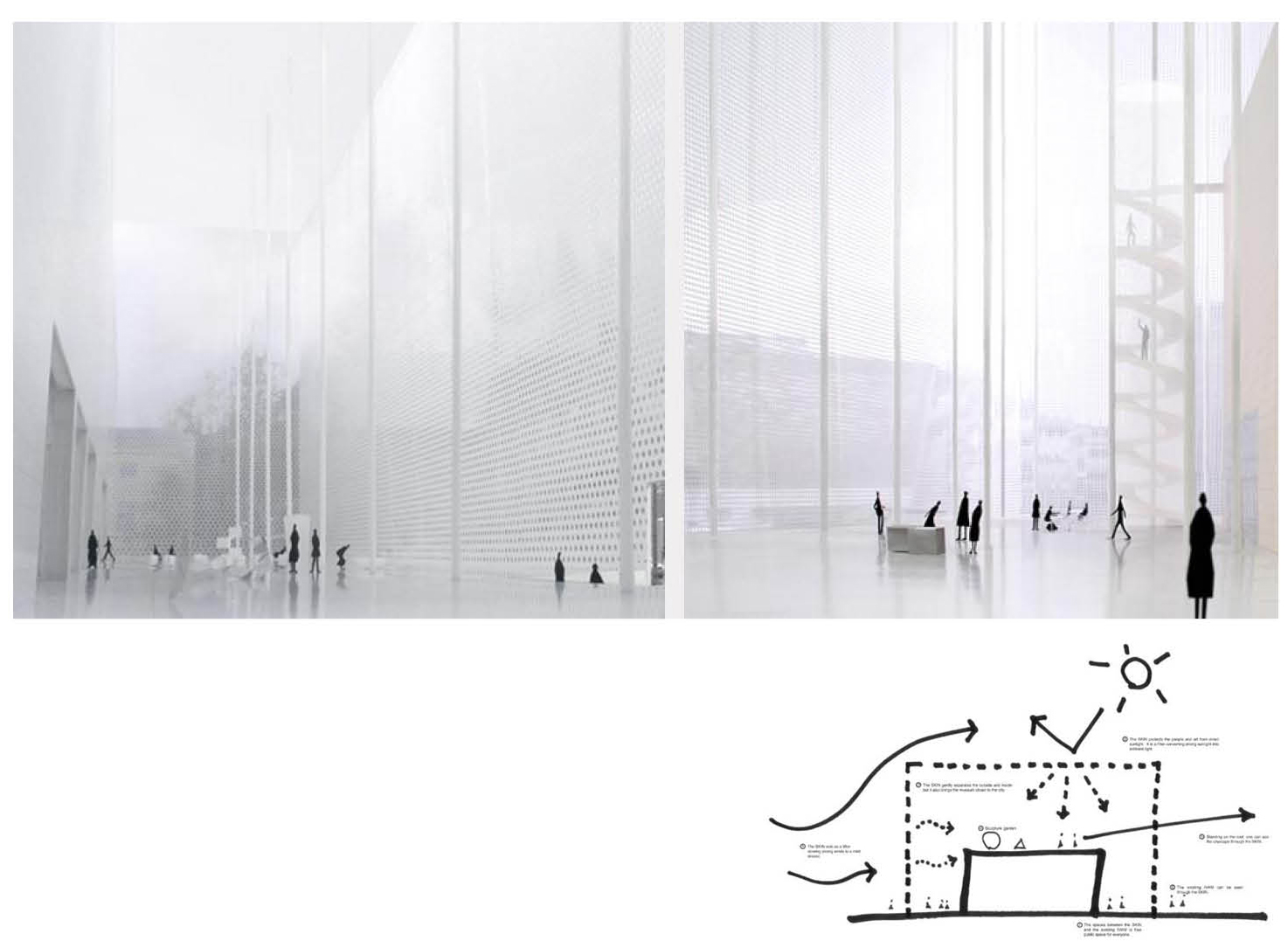Towards Weather-Architecture
|
The surface made of salt and sand material test for permeable facade. WHAT? The process of dissolving the building skin – its dematerialization – is directly linked to the progressive independence from its load-bearing function. The “blur building” was free of a conventional skin, relying on fog’s atmospheric depth for enclosure. As we erode the hermeticism of architecture, the atmospheric conditions of the exterior can penetrate our interior architectural atmospheres. Given this, I will choose the project according to: i.The site should be the some area which has relative climate changes in different seasons. WHY? Man first built houses sheltered from the elements; wind, rain, cold and heat. Pursuing “comfort”, in 1942, Benjamin Franklin developed his notion of heating room with warm air. In 1851, Gorrie patented an “air-cycle compression refrigeration system”, which is a notable advancement over ice-cooled air. As the civilization developed, human beings began to seek physical and mental health and functioning of building by controlling interior environment. People even created simulated seasonal ideal interior space by mechanical systems. This resulted in that the layers of building’s skin are each systematically designed to control atmospheric conditions to provide the “ideal” interior environment. In the past ten years, high urbanization brought extreme weather that is occurring more frequently and continue to polarize. Meanwhile people increasingly rely on the hermetic architecture to protect our manufactured interior climates and are kept isolated from nature. Under this circumstances, a new relationship must be established between architecture and weather that allows buildings to exploit the productive aspects of the atmosphere. My thesis want to explore a potential permeability of building’s skin to establish the relationship. HOW? Renegotiating the relationship between building skin, systems, and the weather is crucial in creating sustainable environments that simultaneously able to exploit the exteror climate while maintaining a protective enclosure. There are three elemental aspects of architecture——program, skin, atmosphere——and their relationship to weather providing us possibilities to inject instability of weather into an static architecture. So on the one hand, contextual studies on architectural material and construction, functional demands of architectural type selected for interior environment should be conducted. On the other hand, there is a need to study how exterior weather conditions affects the interior environment via building “skin”. Next by allowing one to inhabit the layers of the dematerialized building skin, the occupant can select – based on the daily weather conditions – their desired level of enclosure or exposure, thereby allowing weather to permeate the depths of daily comfort. BIBLIOGRAPHY 1. Rem Koolhaas, 2004, “Junk-Space”, Notting Hill Editions |



